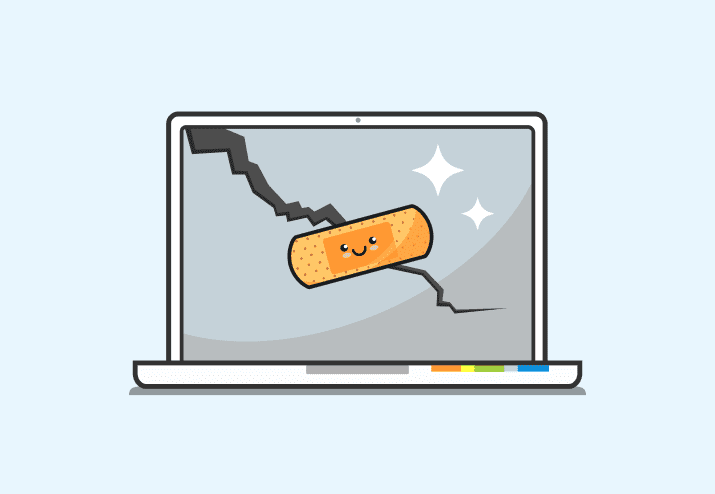IT is one of the most extreme ecosystems. Between long hours, intense pressure, and constant change, just getting through the day can seem like an insurmountable challenge. While sysadmins have developed unique adaptations to thrive in the challenging climate, make no mistakes — some are struggling.
It may be easy to ignore minor signs, like the occasional bad mood or Sunday night dread. However, health problems, addictions, and other significant issues may be harder to overlook.
Don’t let your sysadmins suffer needlessly. Providing critical support can help them do their best work while living their best lives. Understand the biggest threats to sysadmins and learn how to create a more hospitable environment.
🎉 While there's still room for improvement, 2023 The State of Sysadmin showed notable growth in perceived support from the executive team, rising from 57.19% in 2022 to 73.1% in 2023. 🎉
Common threats that sysadmins face
A large percentage of the sysadmin population has faced the following problems at some point in their careers. However, for some, these lingering issues present a greater threat to their prosperity.
Constant change
The problem
System administration is in a constant state of flux. As technology evolves, so too does the role of the sysadmin. Adapting to these changes can be taxing for even the most robust IT professional.
“Technology changes rapidly, and there is a need to keep up with educating yourself.”
The solution
As a CTO, supporting the continuing education for your team members is often critical to their success. Providing the time and resources necessary to keep them up to date on the latest developments helps them stay at the cutting edge of technology. It also takes some of the pressure off your staff, who may otherwise feel like they have to spend their limited off-hours studying.
Unrealistic expectations
The problem
There’s no doubt that sysadmins are incredibly knowledgeable. However, technology is a vast and constantly changing field. Sysadmins can’t possibly know everything about all related topics. Despite the obvious limitations to any one person’s knowledge, many users (and sadly, even managers) expect their sysadmins to be experts across technology-related specialties.
Not only that, but some feel that sysadmins should have cheetah-like speed, springing into action the second something goes wrong. Unfortunately, most aren’t equipped to run at high velocities. Even if they are, some fixes are not as simple as turning a machine off and on again.
All these unrealistic expectations lead to overwhelming pressure.
"Mistakes are acceptable in every job role except ours.” - Jeff
The solution
Leading your organization requires setting realistic expectations for your employees. Trust your sysadmins, and listen to what they say. Urge other employees to do the same. Make it clear that the IT team has competing priorities, just like any department. As such, some requests have to wait.
Odd hours
The problem
Sysadmins frequently work nights and weekends. Some problems need immediate fixes, and that may require calling someone in during their time off. Additionally, pushing out updates and doing routine maintenance is often more convenient for users when sysadmins take care of them outside of regular business hours.
Unfortunately, working odd hours and coming in during time off can add to exhaustion. To make matters worse, it can contribute to feelings of constantly working, which is a recipe for burnout.
“You are always on call.” - GrayRoberts
The solution
If your company regularly experiences IT emergencies, rotate which team member is on call so your sysadmins can enjoy true time off. For deployments, consider using the right tools that allow you to schedule updates to avoid interrupting users without requiring sysadmins to be in the office outside of normal working hours.
Relationship challenges
The problem
Sysadmins are widely misunderstood. A lot of people don’t really know what they do. Even those who have a basic understanding often hold misconceptions. These misunderstandings and misconceptions, combined with unrealistic expectations, can strain relationships with users and managers. An unwillingness of users to own up to their mistakes further jeopardizes rapport.
“Users will lie to you constantly. By the time whatever issue gets escalated to you, chances are the user is going to be extremely frustrated. Many times, that frustration is going to be directed at you. If you have thin skin or can't let it roll off your back, it's probably not the line of work for you.” - A_Parq
The solution
Communication is key. Encourage active collaboration between the IT team and other departments. Allowing other employees to see what your sysadmins do can help forge personal connections, thereby reducing misconceptions and unrealistic expectations. It’s easier for users to treat a sysadmin with respect and consideration if they view them as “my buddy Chris” instead of “that person who fixed my laptop after I spilled my Lucky Charms on it and blamed it on a leprechaun.”
One way to do this is to have your sysadmins provide training to users when your company introduces new technology. This increases their visibility across the organization and reminds users that they do more than just fix problems.
As the CTO, also don’t be afraid to do a little cheerleading for the IT team. Let people know what the department does, share updates on your latest projects, and encourage questions and conversations.
Spotting a struggling sysadmin in the wild
Changes to a sysadmin’s normal behavior can be one of the first signs of distress. Here are a few signs to watch for:
Loss of interest
Decreased confidence
Increased interpersonal conflict
Missing deadlines
Making mistakes
Physical signs
Indications of drug or alcohol abuse
With just a few minor environmental modifications, you can help your sysadmins flourish. Equipping them with the tools they need to perform their jobs more efficiently is one of the easiest ways to set them up for success. PDQ Deploy and Inventory streamline patch management and software deployment to save your sysadmins’ time and energy. The PDQ blog and YouTube channel are also here to support sysadmins with the latest tips and tricks to help them adapt to the changing IT landscape.




